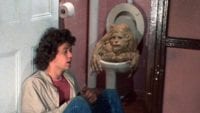The horror genre has existed in cinema for over a century—in other words, horror films have been around about as long as motion pictures themselves. From the earliest horror short films directed by Georges Méliès in the 1890s to the faceted, robust production industry that propels the genre today, horror movies have always served us by enabling us to project our forbidden desires and secret fears while formalistically stretching cultural boundaries. Our Horror Through the Decades series examines definitive qualities of the horror genre in each decade from the 1940s through the 2010s.
This week, Vincent Greene discusses the industrial milestone of franchise horror films in the 1980s.
The 1980s for many, myself included, is not just the golden age of the slasher horror but also for horror as a whole. Whereas the 1970s was horror in its teenage years, the ’80s was the entry of the genre into adulthood. The decade saw the birth of so many legendary villains, that still haunts our every waking moment to this day. Much of the groundwork was laid in the previous decade, with the creation of The Texas Chainsaw Massacre by Tobe Hooper. The iconically terrifying tale of the teens set upon by the Hewitt family was a huge milestone for the genre. It showed what was possible and it also showed that deep down we all have a lust for gore and the gruesome.
The decade that proceeded the ’80s was also the era of satanism which saw the release of The Omen, The Exorcist, and Rosemary’s Baby. All these devil-centric movies used subtlety and the supernatural to enhance the assault on the senses of the audience. It was an era that once again showed that there were many facets to the genre and that the implication of terror is every bit as frightful as the unbridled rage that was on display in movies like The Texas Chainsaw Massacre.
The ’70s didn’t stop there. John Carpenter would change the world of horror with the advent of Halloween; once again, this was such an important moment for the genre. It proved that it could not be pigeonholed, that it is not one thing but the exact opposite, that it could wear many masks. What lay beneath those guises was a multitude of unique and singularly horrific creations just waiting for you to take a peek. The reason I mention these ’70s horror movies is that I feel it is important for me to show you the foundations before I show you the house that was built on top of them in the 1980s.

You see, the milestones and the creations of the ’70s would act as not only the inspiration for much of what came after but many of the stories that were born in the ’70s were expanded in the ’80s, giving birth to the horror movie franchise. Movies such as The Omen, The Texas Chainsaw Massacre, The Exorcist, and Halloween all had sequels in the ’80s. Unfortunately, many if not all failed to rekindle the roaring fires that were lit by their predecessors. The once horrifying tale of the Hewitt clan devolved into little more than cartoonish, over the top, near parody of itself, and it lost all of the rawness of its forefather in its 1986 follow up.
Five years earlier, the follow-up to the seminal slasher Halloween saw the introduction of the much-maligned story arc of Laurie Strode being Michael Myer’s sister, a retcon that took away some of the gloss from the original’s premise. The randomness of the attacks of 1978’s Halloween is what made it so spine-chilling. It introduced viewers to the idea that someone places a target on your back that becomes impossible to shake and with no apparent reason except that they just happened to cross paths with you. Michael Myers represented the cold, lifeless face of evil and to give him motive was nearly detrimental to the franchise as a whole. The familial ties to Michael ended up infecting the entire franchise apart from Halloween 3: The Season of the Witch, which we won’t go into any detail here (for good reason).
In wasn’t in the expansion of what came before that this decade showed its true strengths, it was in the creation of its own villainous foes. At the beginning of the ’80s, Sean S. Cunningham would direct the first installment of the Friday the 13th movie franchise. The first saw the burgeoning mythos behind that of the Vorhees family. The killer in the first film was Ms. Vorhees, a mother set on revenge for the death of her son at Camp Cyrstal Lake. The success of the first Friday the 13th led to a sequel and the introduction of the unstoppable force that is Jason Vorhees.
Ms. Vorhees’ baby boy struck fear into the hearts of audiences worldwide, and the success of the franchise would see a new entry released almost annually for the remainder of the decade. Whereas Halloween and Michael Myers gave birth to what we think of the modern slasher, it was the constant onslaught of the Friday the 13th franchise that brought it to new heights, maybe not critically but surely financially. To this day it remains one of if the most successful horror franchises in the history of cinema. One would think that with our every waking moment being stalked by Jason Vorhees, it couldn’t get any worse; well, we were wrong.
In 1984, the master of horror Wes Craven would breathe life into Freddy Kreuger, and now there would be no respite, not even in our dreams. The A Nightmare on Elm Street franchise was a huge landmark for the genre and showed us another branch to this terror-filled tree. What Craven manifested in Kreuger reached deep down inside our very psyches, showing us that there is no escape now, that evil will not have to seek you out because you will come to it. It will just wait for you to be at your most vulnerable, turning our deepest dreams into waking nightmares.
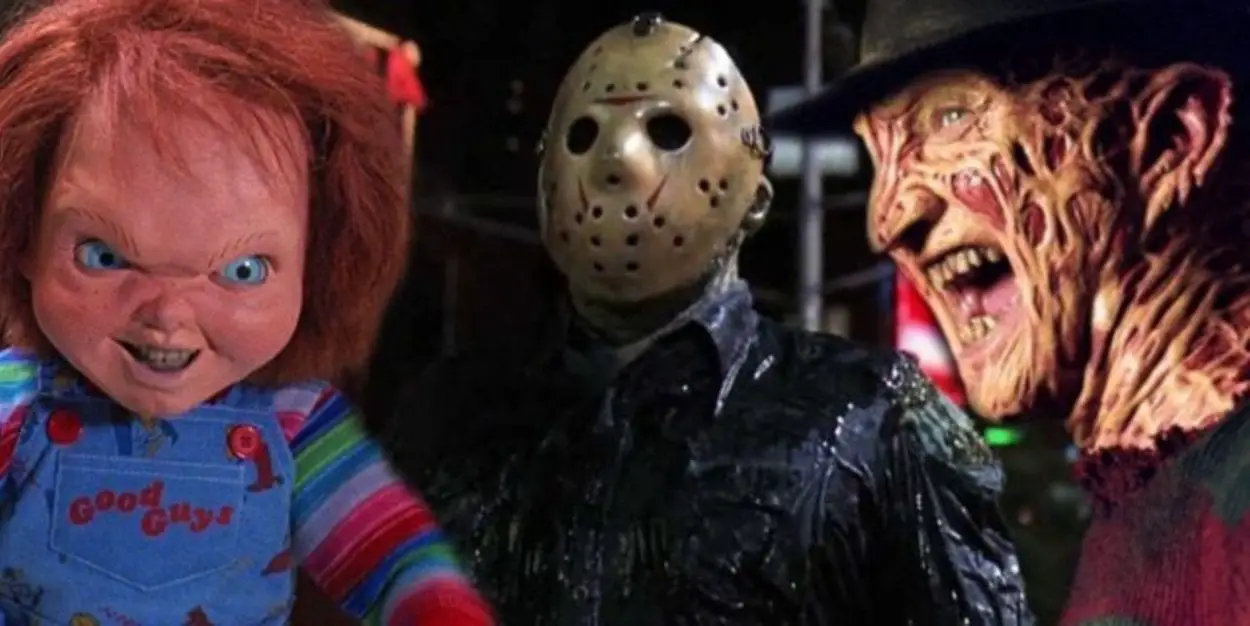
Although the Friday the 13th and A Nightmare on Elm Street franchises took center stage during the ’80s, they weren’t the only film series with immense longevity that were created during this decade. In 1988, director Tom Holland would give birth to the Child’s Play franchise, and its toy-like tormentor Chucky. Brad Dourif’s turn as the voice of the minute monstrosity is legendary and was just the first installment in a film series that would spawn many sequels in the following decade. Child’s Play was another opportunity for the genre to show its diversity and it did not disappoint, taking the slasher subgenre in a wholly unexpected direction.
It is true that the villains of the ’80s are what the decade is best known for, but they are not all that this generation of filmmakers brought to the forefront of the social zeitgeist. This was the era that gave rise to what many now consider the horror movie archetypes, the idea that no horror is quite the same without the jock, the nerd, the stoner, the promiscuous girl, and last but not least the quiet girl. Which often, in turn, filled the most iconic of all of the horror archetypes, that being that of the Final Girl.
It is Tobe Hopper who is given the credit in many circles for the creation of the Final Girl, in the aforementioned Texas Chainsaw Massacre, but it was the ’80s that created the legendary aura that surrounds the archetype. For every tormentor, there is an equally tormented survivor, usually a lone survivor that somehow manages to stay afloat against the current of the sea of savagery. These oftentimes young women were inspirational to all of us. They were the embodiment of the human spirit, of what we can endure and then still come out from intact.
The Final Girl archetype was conceived in the ’70s in The Texas Chainsaw Massacre, then taken to another level by John Carpenter in Halloween, and it was fully realized in the ’80s and became firmly entrenched in the DNA of the genre. Another staple of the genre is the term Scream Queen, a term that finds its origins going as far back to the ’30s and really became attached to the horror genre in the 1980s. There is no better example of this than Jamie Lee Curtis, the daughter of the Janet Leigh, a famed Scream Queen in her own right.
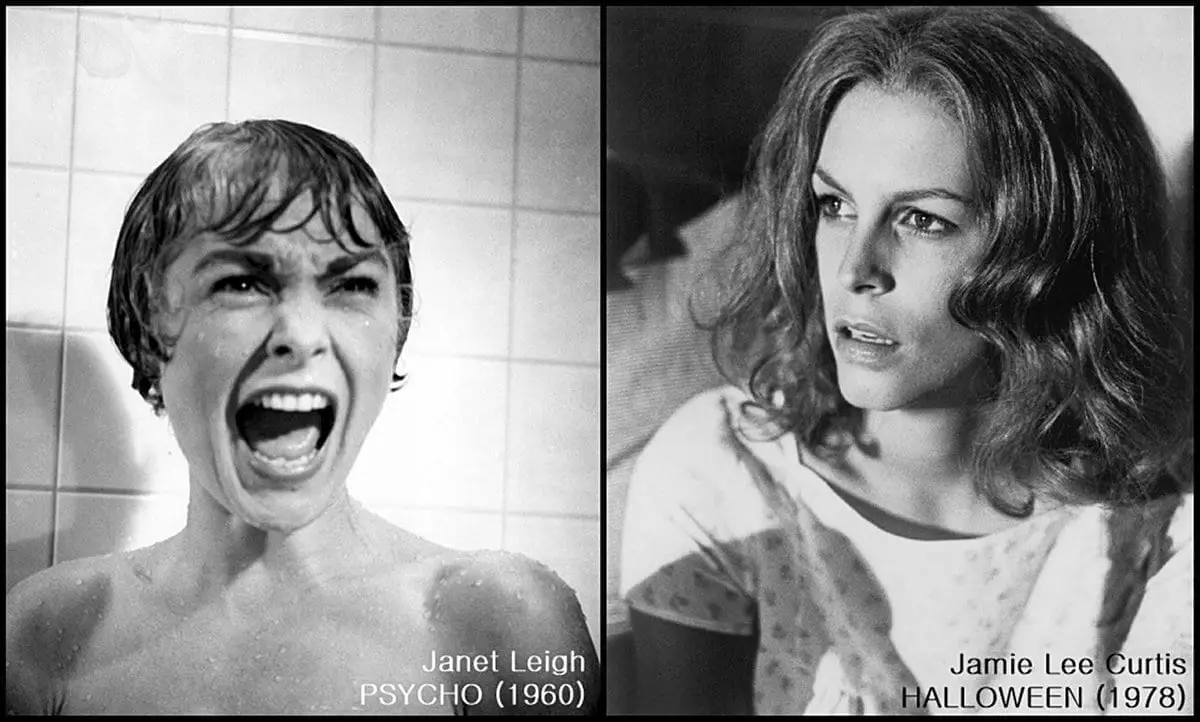
The younger of the two onscreen legends brought the term Scream Queen to new heights. It was Jamie Lee Curtis’ turns in movies such as Halloween 2, The Fog, Prom Night, and Terror Train, to name a few, that went a long way in giving credence to the moniker. Few performers stamped their mark on not only the genre but also the decade as a whole like Curtis did. The only actor that could be mentioned in the same breath as Curtis would be Heather Langenkamp for her turn as Nancy in the A Nightmare on Elm Street series.
Although Langenkamp definitely deserves a mention, her horror resume pales in comparison to that of Curtis, who has continued to make horror movies and TV series up to this day. Curtis would go to reprise her role as Laurie Strode in the Halloween timeline reboot in 2018 and again in its follow up Halloween Kills, which is slated for release later this year. Not stopping there, Curtis would also star in the aptly named TV series Scream Queens from American Horror Story creator Ryan Murphy. These more recent roles have done nothing but cement Jamie Lee Curtis as not only a Scream Queen but the Scream Queen. She is the monarch of the world of monsters, wearing a crown that was bejeweled in brutality starting all the way back in the 1980s.
Don’t get me wrong, the 1980s weren’t all just slashers movies and Final Girls, these years also were the breeding ground for the subgenre of the body horror. The pioneer at the forefront of this was one of the original pioneers of the slasher movie, that being John Carpenter. The 1982 cult classic The Thing pushed boundaries into previously unforeseen territory. It was another milestone for the genre as it gave us a glimpse of the potential of practical effects. Two years earlier, our first glance of this potential came in John Landis’ An American Werewolf in London—the transformation scene was and is the stuff of legend. Slowly but surely, we were starting to see the advancements in not only the technology but also the techniques used to bring these creatures to life.
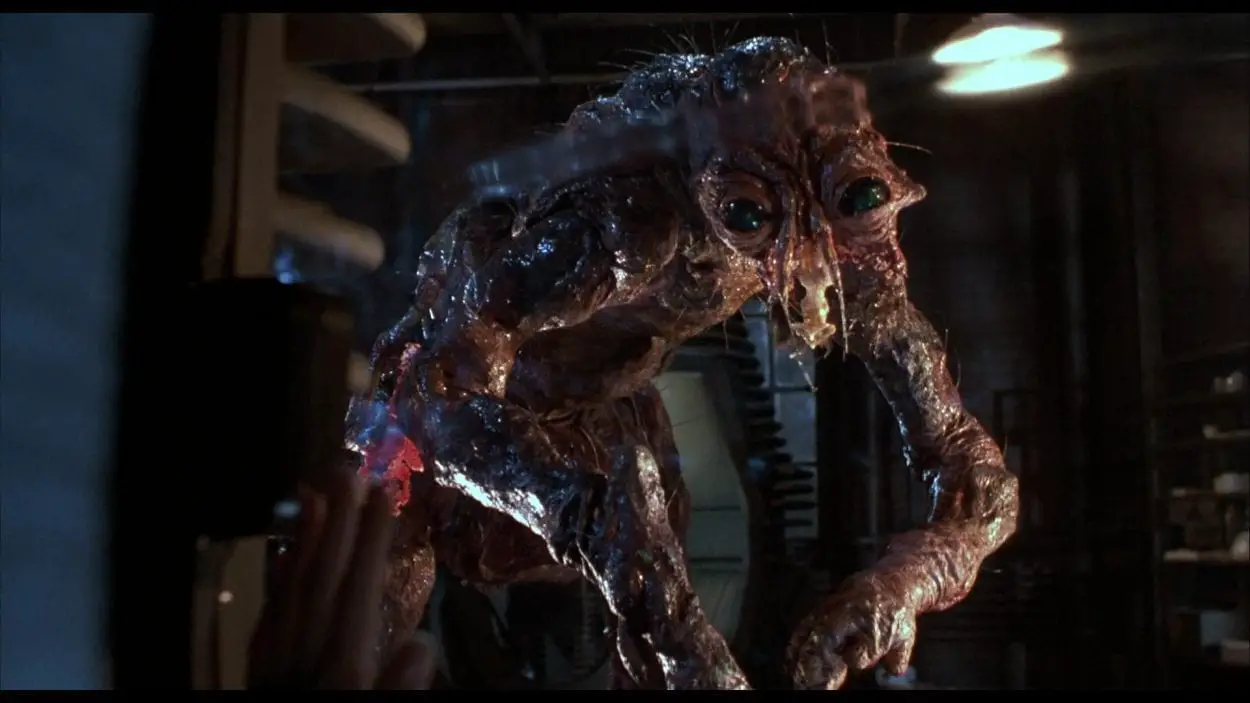
The next phase for the embryonic subgenre came in the shape of 1986’s The Fly from David Cronenberg. The Jeff Goldblum-led story about a man’s transformation into the self-proclaimed Grundle Fly is the stuff of nightmares. The misshapen monster was like nothing that had ever been seen before and set a new bar of excellence for the genre going forward. If Cronenberg was the one who pushed the limits of what the genre had to offer, it was Clive Barker who absolutely obliterated them all together with Hellraiser. Barker’s 1987 body horror was based on his own novella The Hellbound Heart, and it portrayed gore on a level that had never been seen before and has gone on to inspire many more movies not just in its own franchise but in the genre as a whole.
Even though Carpenter, Cronenberg, and Barker bore much of the weight, the high bar was also held up by filmmakers such as Sam Raimi and Stuart Gordon. Sam Raimi’s 1987 darkly comedic Evil Dead 2 and Stuart Gordon’s 1985 Re-Animator changed the playing field for the genre. The almost slapstick nature of Bruce Campbell’s turn as Ash in the sequel to Evil Dead and Jeffrey Combs’ portrayal of the mad scientist in the rapturously brilliant new-age Frankenstein tale allowed the oftentimes dark subgenre of body horror to take a walk on the lighter side. Although the tones of these movies vary wildly, what they do have in common is their use of cutting edge practical effects.
These practical effects were brought to life by some of the best, most imaginative creators of all time. If this was a golden generation of the genre, it was also a generational peak in terms of how the effects were crafted. To name but a few, the likes of Tom Savini, Greg Nicotero, Rick Baker, and Stan Winston are all legends in the field of practical effects. Their work was completely unique and groundbreaking, always pushing the envelope of what was previously thought possible.
Baker’s work on An American Werewolf in London is legendary. I previously mentioned the transformation scene at the climax of the movie; it was Baker’s imagination paired with Landis’ vision of a hell hound that showed to others going forward what ingenuity can manifest. It was a bold moment in a bold movie, and it paid off for the genre to no end. While Rick Baker was lighting the torch, it was the likes of Tom Savini and Greg Nicotero who picked it up and ran with it.
The combination of the two on George A. Romero’s 1985 Day of the Dead brought the zombie genre into the modern age. Nicotero has since stated that it was the work that he and Savini did on Day of the Dead that gave him all of the tools he needed when the time came to construct the post-apocalyptic world in The Walking Dead. The similarities in the style and techniques used are undeniable. Once again, Nicotero finds himself at the forefront of the modernization of the genre, this time adding a layer of CGI over his world-class practical effects.
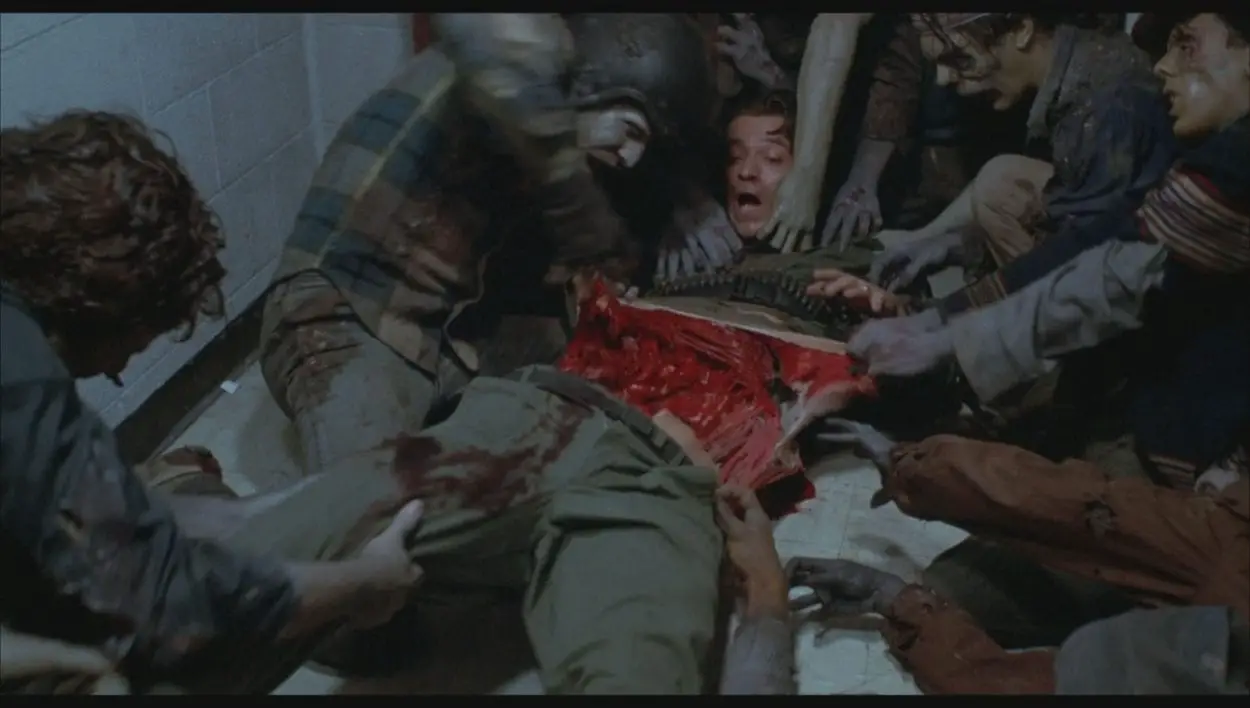
Last but not least is Stan Winston. Few can hold a candle up to Winston’s resume, the man who collaborated on both James Cameron film Terminator and then Aliens, which followed directly after. If those two accomplishments weren’t impressive enough, then Winston’s turn in creating the titular character in John McTiernan’s 1987 Predator only solidified his place at the top of an extremely impressive pile. It is without question that it is the director who builds the skeleton of a story, but it is the artists that flesh them out in a way that few others could ever do.
The 1980s were filled with some of the most memorable monsters and villains in history. It was also filled with many advancements in almost every facet of the horror storytelling experience. But, it was a film that was the lasting remnant of the preceding decade that will forever be remembered as the standard-bearer for the ’80s. The film I speak of is Stanley Kubrick’s 1980 instant classic The Shining. The meticulous nature of Kubrick’s directorial style and the iconic performance from Jack Nicholson as the patriarch of the Torrance family has planted The Shining in an immovable position in the upper echelons of the genre. It was a perfect hybrid of these two decades, carrying the subtly of the ’70s but paired with the ferocity of the ’80s.
There are many movies that broke new ground for horror during the ’80s but it was The Shining that paved the way. It set the tone for the era and a generation of filmmakers. It showed what not only the genre was capable of doing but it also showed creators how to be brave and bold with their methods. It opened up the avenue that the rest traveled along with a fervent glee and passion. Kubrick showed to the rest that the way he started is how they should mean to go on. It was a stunning opening to the decade that would later be heralded as the pinnacle of the genre, a pinnacle that even four decades later looks as though it may never be surpassed.

